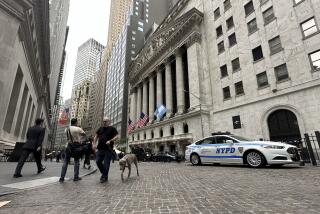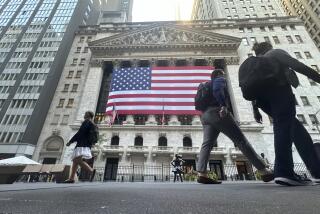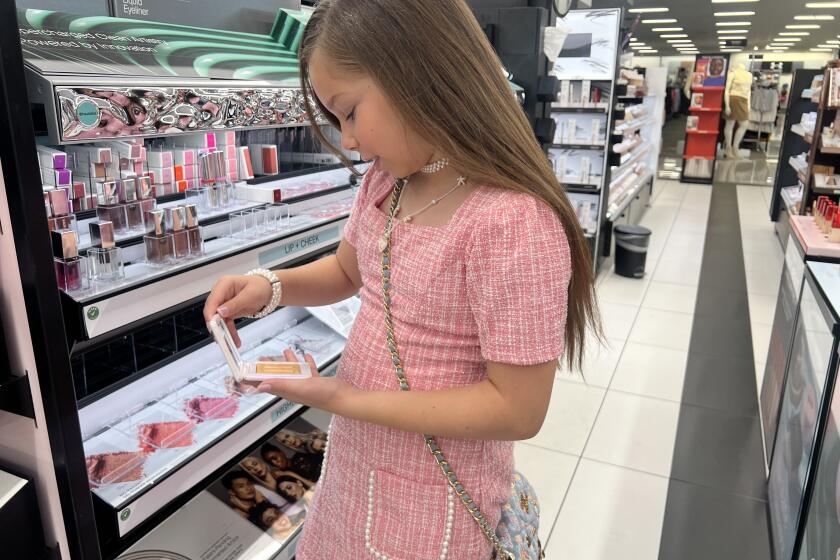Maybe We Should Start Calling Them ‘V’ Chips
- Share via
With the Dow Jones industrial average hitting a record high of 7,333.55 last Thursday--before diving 138.88 points on Friday to 7,194.67, as jitters revived over Tuesday’s Fed meeting--the speed with which stocks have rebounded from their early-spring decline remains a source of amazement on Wall Street.
Amazement because, by many “technical” rules that traditionally have governed market moves, stocks should not have zoomed back to new highs as fast as they did--nor should they have fallen as fast as they did in March and April.
Hence, a chart of the Dow over the last three months shows a distinct “V” pattern, which analysts say more resembles trading patterns in things like grain futures than in stocks. “It’s acted more like a commodity market than like an equity market,” says Dennis Jarrett of Jarrett Investment Research in Westport, Conn.
Compare the recent decline and snap-back to the market’s pullback last summer. Both declines clipped about 10% off the Dow index. But when the Dow peaked last May 22, it took 43 trading sessions to reach a bottom, on July 23, then 37 trading sessions to reach a new high, Sept. 13.
This time around, the Dow peaked March 11, took just 23 trading sessions to bottom (on April 11), and then a mere 16 sessions to reach a new high, on May 5.
In part, the Dow’s extraordinary volatility reflects many investors’ extraordinary focus on blue-chip stocks at this stage of the bull market: People want to own them because their fundamentals are so powerful, but people also know they can sell them quickly in a market decline, because of the stocks’ liquidity.
Peter Canelo, strategist at Dean Witter Reynolds in New York, thinks emotions have simply been at a fever pitch because the Fed turned against the market in March, tightening credit for the first time in more than two years. Investors’ knee-jerk reaction is almost always to sell when the Fed is tightening.
But with so many other positives underpinning stocks--high demand from individual investors, corporate takeovers and stock buybacks, and generally strong corporate earnings--Canelo says it isn’t surprising that investors wanted to rush back into the market at the first sign that the economy might be slowing a bit, which could keep the Fed from doing too much more to rates.
Many pros see the Dow’s pattern as a warning: Whatever happens with stocks going forward, they will be far more volatile.
More to Read
Inside the business of entertainment
The Wide Shot brings you news, analysis and insights on everything from streaming wars to production — and what it all means for the future.
You may occasionally receive promotional content from the Los Angeles Times.










